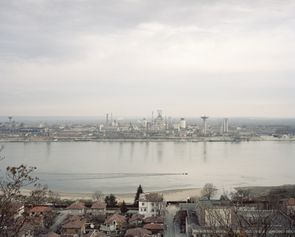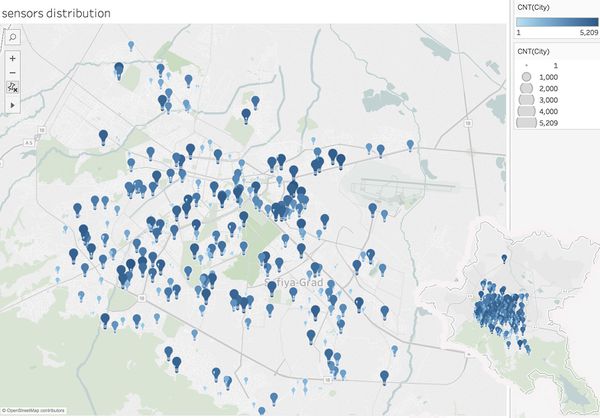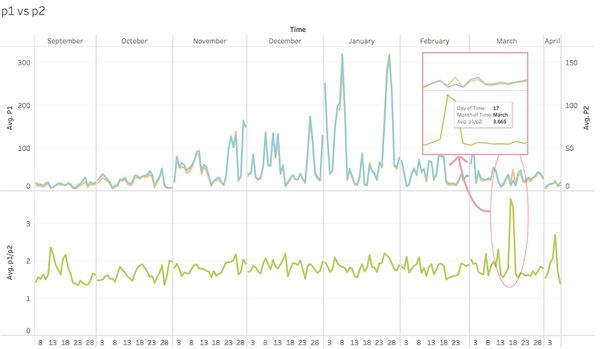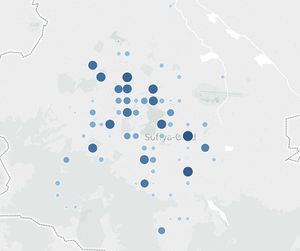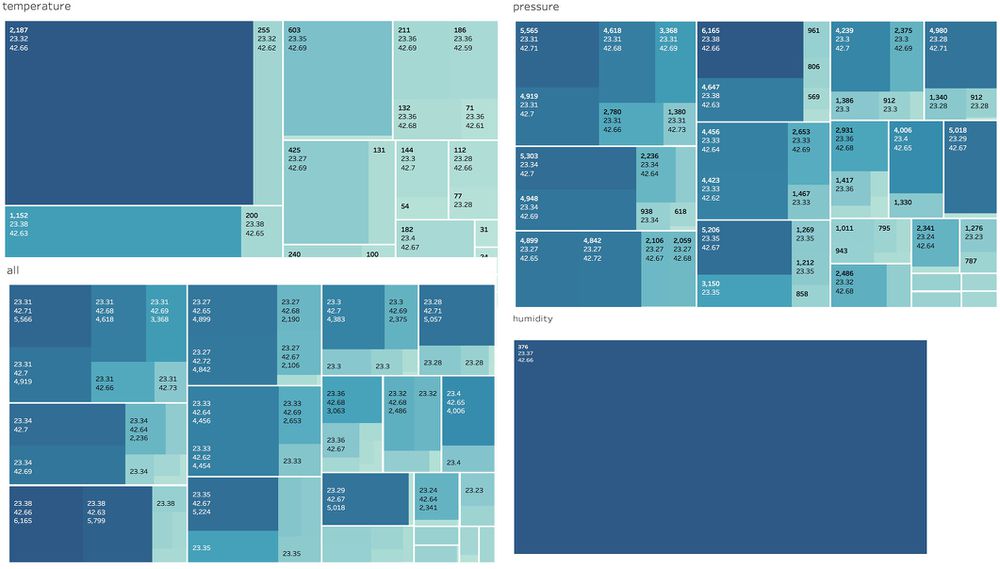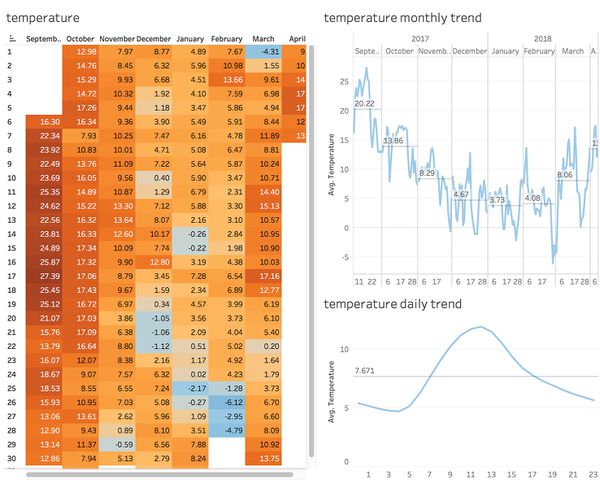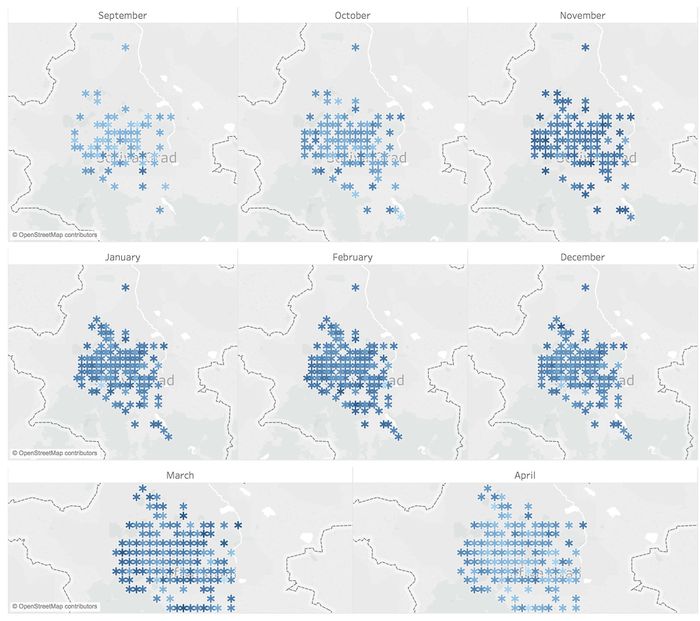ISSS608 2018-19 T1 Assign Chen Jingyi Task 2
|
|
|
|
|
|
Contents
Sensors' coverage
The distribution of sensors over the city is quite interesting, most are evenly distributed in the center area of sofia city, however, on top of the map there exists one lonely station who is isolated from the majority. In all the other sensors, although there are huge discrepancies among the number of records taken by each(ranging from 1 to more than 5000), sensors with large amount of records and those with small amount of records are evenly plotted.
Unexpected observations
1. Usually, P1 and P2 follow an identical trend, and the ratio of P1/P2 is always around 1.8. However, in Mar 17th and 18th of 2018, the value doubled. This may be a seasonal reason since one unique source of PM10 is pollen.
2. There is a high portion of impossible data(more than 10% of total), which should be taken for examination separately. The incorrect records include temperatures which doesn't even exist on earth(-5573°C), humidity below 0 or greater than 100%, pressure equals 0 and so on. The map graph below shows that most records of anomalies from several stations are near the center of Sofia.
Here we use heat map to show how many wrong records are kept by each coordination and in different measurement types. By using filters, we know that 'pressure' comprises the majority of wrong numbers. Inversely, 'humidity' only has a small portion os unusual records and all of them are taken from one location. For 'temperature', although it has the most extreme values, the number of records are at a middle level.
Air pollution measurements
Temperature, humidity and pressure
Temperature
The pattern of temperature in Sofia city follows the typical mode of north earth, which has the cold long winter (November to February) and moderate weather in other months.
Pressure
These's no significant fluctuation in the trend line of pressure, just slight fluctuation around mean value 95000.
Humidity
The monthly trend of humidity shows extremely high fluctuation, and the average humidity of each month is lowest in autumn, and highest in winter. The west-south part of Sofia city, which has a higher altitude compared to other areas, has higher value of humidity.
In autumn, from September to November, starts as a mild and pleasant season, with rare rains, but after that there is a fairly sharp turn during the month of October, when colder air masses begin to circulate.
In late October, when cold air masses begin to circulate, temperature start falling sharply in November. In winter, freezing air often stagnates on the plains, the average temperature is around 0-10 degrees, but there are interim warm wind invasions, which can raise the temperature to up to 15 °C occasionally, and the lowest can reach below -5 °C. The daily temperature gap is also significant.
In spring, the amount of rainfall decreases, but it experiences great changes in temperature, especially in March and April, the climate can go from minus zero to more than 10 degrees, so that the first warm days alternate with the return of cold weather. Usually, from April, temperatures in the plains begin to be mild or warm in a more stable way.
PM10
Values of PM10 is highest in Nov, Jan and Mar, and the upper region of Sofia city unusually has higher PM10 in comparison to the lower region.
PM2.5
PM2.5 has the same distribution as PM10.
